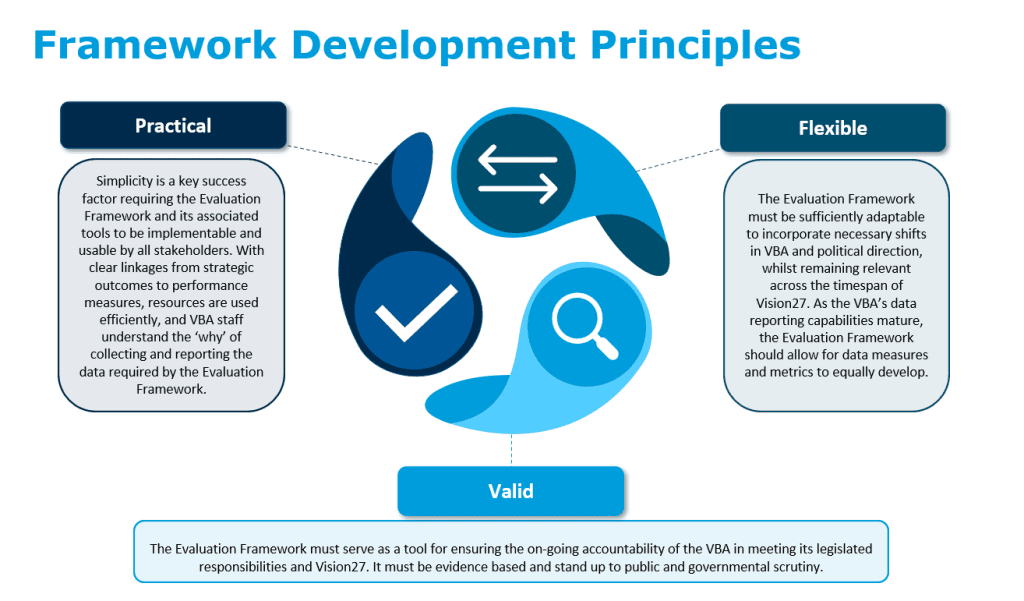MER Framework set up for regulator’s five year strategy

New MER lens for regulator
The nexus of regulation and evaluation is a growing area of our practice. Regulators are experts in using data to drive decision-making and regulatory actions, but don’t always have evaluation capability in-house to help them best position and make the most of their programs.
The situation
Grosvenor was engaged by a Victorian Government regulator to develop a MER Framework for the regulator’s five-year strategy.
The approach
To develop this MER Framework we used a co-design approach based on better practice design thinking to develop a program logic for each of the five pillars in the strategy. The co-design approach centred on the values of being practical, flexible and valid.
We achieved this by designing the strategy’s overarching program logic as an outcomes hierarchy using a maturity continuum, depicting the short, medium and long-term progression and linkages towards each pillar’s ultimate objectives as follows:
Awareness: the base level of each outcome stream – relating to the consciousness / recognition of the strategic priority and its significance
Access: the next step of the maturity continuum whereby stakeholders must have ease of access to the systems, data, processes etc. that drive each of the outcome streams and enable strategic priorities
Use: following on from access (as access alone will not ensure the acquittal of outcome streams and strategic priorities) this step of the continuum relates to stakeholders utilising / availing themselves of the systems, data and processes
Application: (as distinct from use) at this level of maturity, implementation of systems, data and processes is deliberate and fit for purpose
Embedding: (as distinct from application) this is final level of the maturity continuum whereby business changes/streams are regarded as business as usual, and systems and processes are self-driven.
The strategy’s program logic assisted in understanding and capturing the various interactions that formed the regulator and its environment. It included considering all the various business units, systems, processes, people and their functions and describing their interactions. Below the program logic then defined signs of success, key performance measures and monitoring data sets.
Client’s reaction
The regulator was thrilled with the result, having never gone through a process like this before, and commented that it helped them to understand their organisation and strategic goals through a lens they had never considered before.








 We are all about sharing our expertise to help you and your organisation be the best it can be.
We are all about sharing our expertise to help you and your organisation be the best it can be.